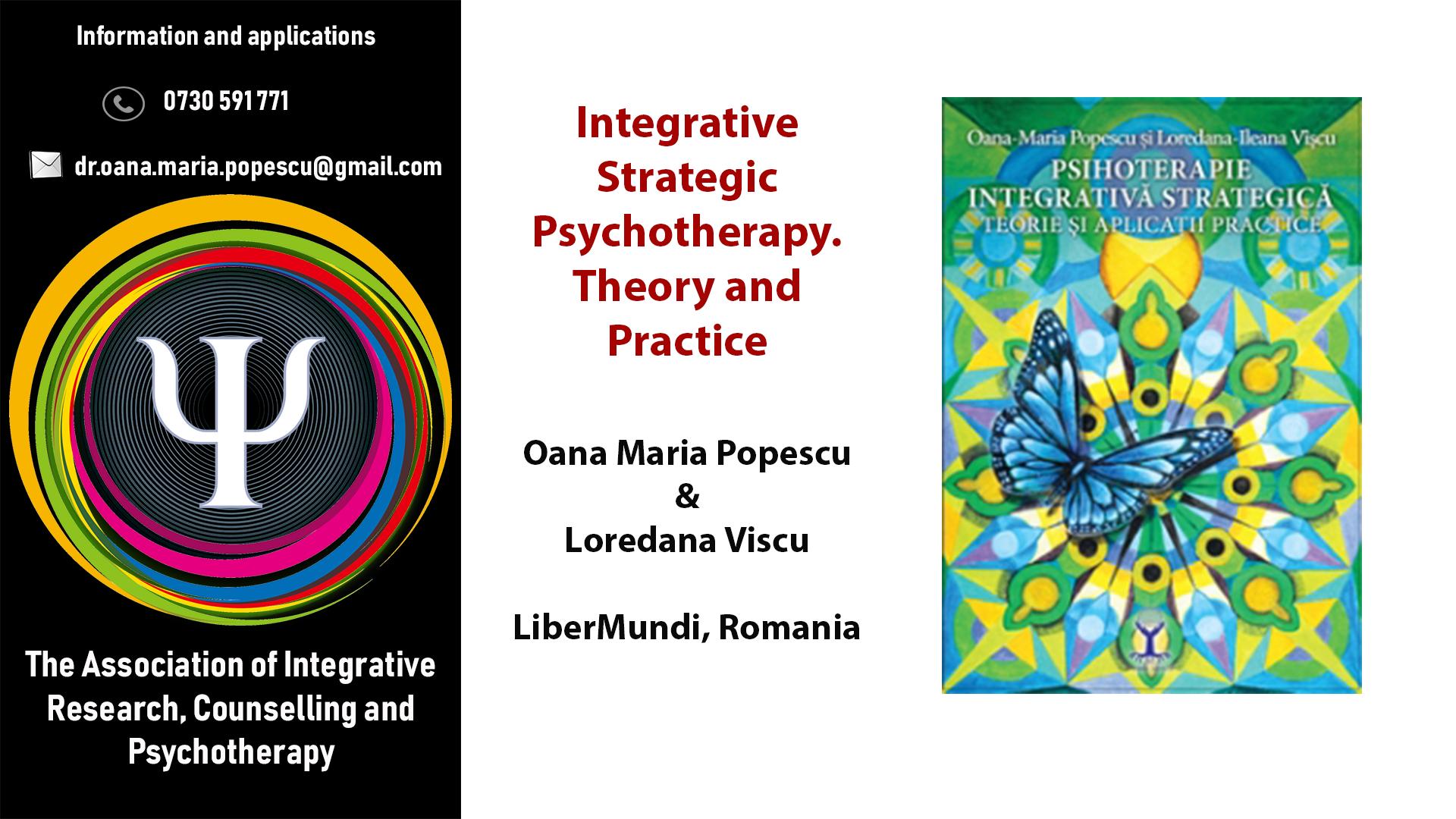Authors: Oana-Maria Popescu and Loredana-Ileana Viscu
Liber Mundi Publishing House, Bucharest, 2016, 412 pages. The book can be purchased from the publisher’s website
CONTENTS
PART I. INTEGRATIVE PSYCHOTHERAPY
PART II. TREATMENTS IN INTEGRATIVE PSYCHOTHERAPY
Chapter 1. First generation integrative psychotherapy
Chapter 2. Second generation integrative psychotherapy
PART III. STRATEGIC INTEGRATIVE PSYCHOTHERAPY
Chapter 1. The strategic integrative model of the Self and its connections with the main psychotherapeutic approaches
Chapter 2. Psychological axes
PART IV. CASE STUDY: ELENA
Common factors in psychotherapy. The integrative-strategic approach
Authors: Oana Maria Popescu & Loredana Ileana Viscu
Pro Universitaria publishing house, Bucharest, 2017, 256 pages. The book can be purchased in bookstores and on the Pro Universitaria publishing site.
CONTENTS
Introduction
Chapter 1. Definition and classification of common factors (1.1. Why is psychotherapy effective? 1.2. Common psychotherapeutic factors 1.3. Models of common psychotherapeutic factors – Relational-procedural-persuasion model, Model of methodological principles and abilities 1.4. Classification of common factors)
Chapter 2. The client variable in psychotherapy (2.1. The client – the most important common factor in psychotherapy, 2.2. Stages of change and resistance to change, 2.3. Motivation for psychotherapy, 2.4. Presentation problem and degree of functional impairment, 2.5. Self development client, 2.6 Self-esteem, self-efficacy and learned helplessness, 2.7 Coping style, 2.8 Attachment style, 2.9 Client personality, 2.10 Personality disorders, 2.11 Ability to assimilate problem experiences, 2.12 Values and customer preferences, 2.13. Demographic and diversity variables)
Chapter 3. Psychotherapist variable (3.1. The psychotherapist – agent of change, 3.2. Relational variables, 3.3. Professional variables, 3.4. Personality variables, 3.5. Developmental variables, 3.6. Demographic and diversity variables)
Chapter 4. Common relational factors (4.1. Therapeutic alliance, 4.2. Therapeutic relationship, 4.3. Transfer and countertransference)
Chapter 5. Common trans-theoretical factors (5.1. Clinical decision, 5.2. Therapeutic context, 5.3. Placebo, hope and expectation, 5.4. Therapeutic process, 5.5. Adaptation of the strategy to the presentation problem, 5.6. Extraterritorial change)
Chapter 6. Common strategic factors (6.1. Therapeutic myth, 6.2. Evaluation process, 6.3. Strengthening the ego, 6.4. Emotional processing, 6.5. Insight, 6.6. Learning experiences, 6.7. Attribution of psychotherapy results, 6.8. Rituals and therapeutic techniques)


Comments are closed